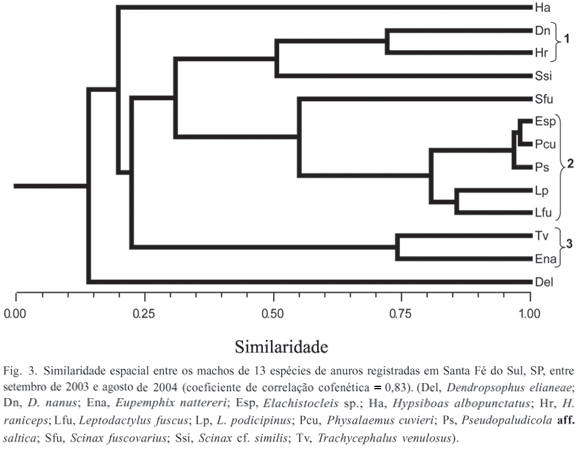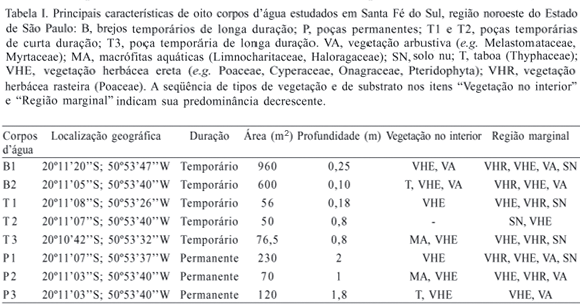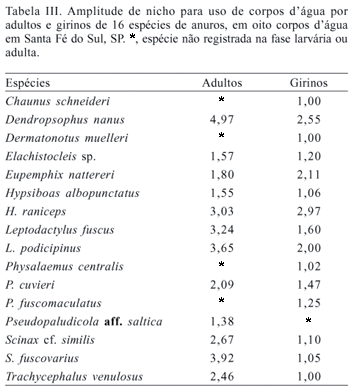Anthropic activities have deeply changed natural environments and constantly affected the diversity and distribution of anurans. This study aimed to investigate the following questions: (1) What is the frogs composition in a pasture region with a pronounced seasonal climate in extreme northwest of the state of São Paulo? (2) How are adults and tadpoles of the species distributed temporally and spatially? (3) Is species richness correlated to descriptors of reproductive habitats heterogeneity? In the study site 20 anuran species were recorded, distributed in 11 genus of four families: Leptodactylidae (9), Hylidae (8), Microhylidae (2) and Bufonidae (1). From these, Chaunus schneideri (Werner, 1894), Physalaemus centralis Bokermann, 1962 and Physalaemus fuscomaculatus (Steindachner, 1864) were recorded only by tadpoles collection, whereas Dendropsophus minutus (Peters, 1872) and Leptodactylus labyrinthicus (Spix, 1824) occurred only in water bodies next to the studied ones. The recorded species are known by their ample geographic distribution and for colonizing disturbed areas in other localities. There was no correlation between species richness and structural complexity of water bodies. However, the greater richness was recorded in temporary water bodies that kept water more than six months throughout the year. The temporary ponds of unstable hydroperiod were colonized initially by leptodactylids, while the permanent or temporary ponds were colonized by hylids. The vocalization and reproductive activity of most species were restricted to the warm and rainy period of the year, a typical pattern of communities in the tropical seasonal regions. Five species [Chaunus schneideri, Dendropsophus nanus (Boulenger, 1889), Hypsiboas albopunctatus Spix, 1824, Leptodactylus podicipinus (Cope, 1862) and Pseudopaludicola aff. saltica (Cope, 1887)] vocalized during the dry and rainy seasons, but only C. schneideri and H. albopunctatus reproduced during the dry season. The weak spatial and temporal segregation, recorded to adults and tadpoles, is not enough to explain reproductive isolation among species. Other factors, like acoustic segregation and calling site segregation, may have major importance to explain species coexistence. Climatic severity (wide and pronounced dry season, unpredictability and inconstancy of rains in the beginning of the rainy season), along with the high level of natural habitat being converted in cultivated areas are, probably, the factors responsible for the predominance of species typical from disturbed areas.
Community ecology; environmental heterogeneity; niche breadth; seasonality; disturbed area











